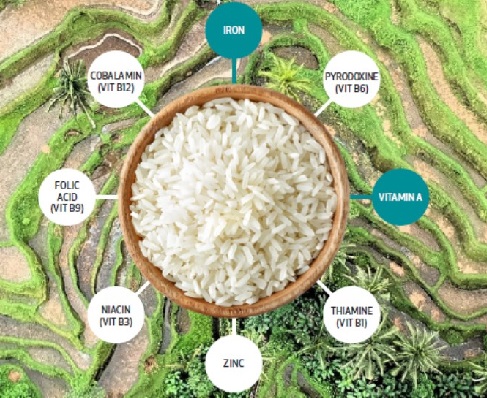PM Modi in his Independence Day announced that the rice distributed under various government schemes like Public Distribution System (PDS) and Mid-Day meal will be fortified by 2024.
This will be fortified by 2024. This would be helping in India's fight against malnutrition and lack of micronutrients which would affect the growth of the poor.
Fortification of Rice and Public Distribution System
- It is a pilot scheme sponsored by the Central Government.
- It has the budget outlay of INR 174.6 crore.
- A total of 130 lakh metric tonnes of food grain is being provided to 112 districts identified.
- The rice would be distributed through various schemes like PDS, MDM and Integrated Child Development Schemes (ICDS).
- The quantity of the fortified rice would be scaled up to at least 350 LMT.
- This covers the entire PDS rice supply lines across the country.
- An additional 31 LMT of rice is supplied through ICDS and MDM which would help 8.5 crore beneficiaries under the ICDS and 10.4 crore under MDM.
- This means 381 LMT of rice needs to be fortified.
- Take a look at the nutrients in fortified rice below

What is meant by Fortification?
As per the WHO, the process of increasing the content of an essential micronutrient, mainly vitamins or minerals, in any food item that can help in the improvement of its nutritional value and provide public health benefits at minimal cost is called fortification.
After Milk, Wheat, Salt, Edible oil, rice is the fifth item to get fortified.
Fortification: Requirement in India
Micro nutrient malnutrition is basically the shortage of essential vitamins and minerals. This affects people frequently but does not show any clinical symptoms. However the consequences are long lasting hence it is called hidden hunger. Fortification would end this thing.
Hidden hunger makes the people more prone to infectious diseases, hampers their growth physically as well as mentally and increases the risk of premature death along with various other ailments
Also India is home to about 60% of world's anaemic preschool children and b also 50% of anaemic pregnant women, which makes fortification all the more necessary.
As per the report of National Nutrition Monitoring, more than 50% of the population across any age group consumes less than 50% of the iron, zinc, vitamin A, folate and Vitamin B.
Observer research Foundation suggests that every dollar spent on nutritional interventions in India could generate 34.1-38.6 UDS in the public economy. This is three times the global average.
Also Read| Explained: Indore becomes the first water plus city of India
Comments
All Comments (0)
Join the conversation